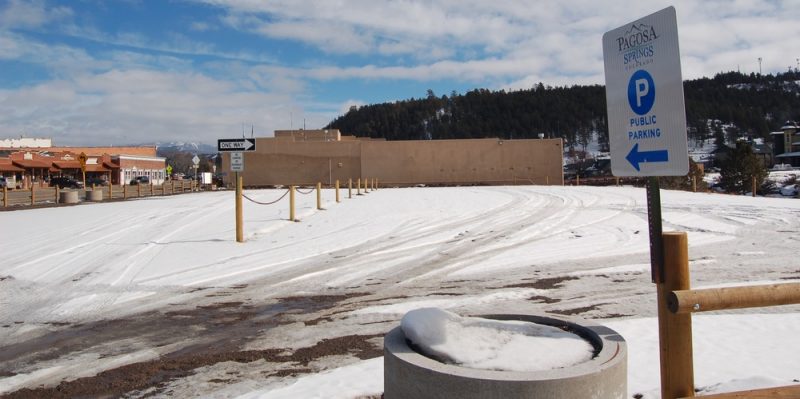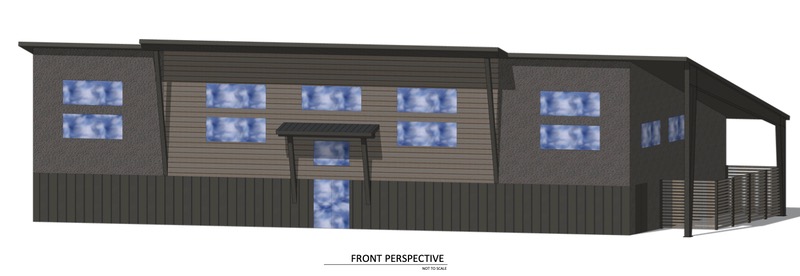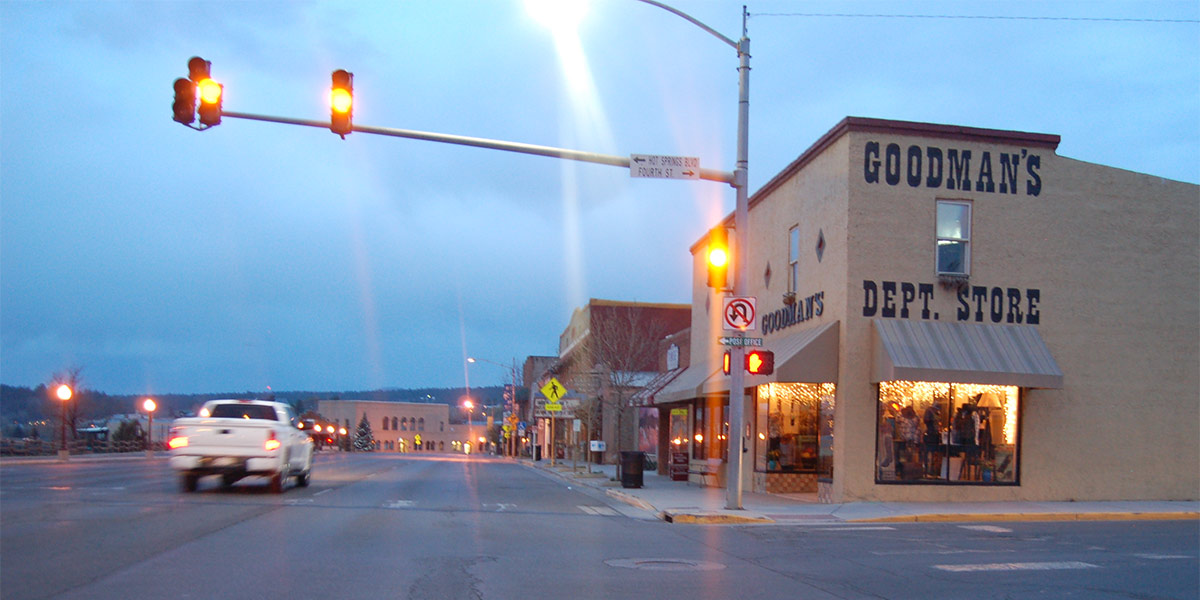As noted already in this editorial series, one of the persistent goals of the Town government, here in Pagosa Springs, has been a ‘walkable’ downtown. Another idea that’s been continually tossed around, these past 20 years or so, has been a parking garage. I recall, back in 2004, considerable interest, among the folks who wanted to plan a more economically vibrant downtown in building such a structure on Town-owned land at the Hot Springs Boulevard-Highway 160 intersection — which is to say, on a generally underutilized corner of Town Park. Around that same time, people were also talking about tearing down the Middle School and making a parking garage there. (A new Middle School would of course be built somewhere else.)

Last week, I had the pleasure of sharing coffee and conversation with a fellow activist at the Root House Coffee Shop — formerly the River Pointe Coffee Cafe — and the topic turned to parking garages. Here’s how I recall a portion of the conversation about “re-vitalizing” downtown.
“The Town should buy up the old Courthouse property,” my friend suggested, “along with the vacant property next door, and tear down the Courthouse. Then lease the property at a very reasonable rate to a developer who will build an underground parking garage, put retail at the street level, then office space on the second floor, and penthouse apartments on the third floor. You would have killer views of the river from the third floor.”
For reference, the current, mostly-abandoned County Courthouse is only two stories high.
Speaking realistically, the Town government could probably afford to actually do this. If they made it a priority, and tightened their belts, and stopped building $6 million shop facilities for the Town streets crew. Government in other Colorado towns have done similar projects — buying up vacant land and leasing it to developers. In our wildest dreams, we could actually have an underground parking lot and thriving commercial and residential buildings where the Courthouse now stands.
My friend noted that developer David Brown had been proposing something similar, back in 2004. Indeed, Mr. Brown had purchased the businesses next door to the County Courthouse and demolished them, creating what has now become a perpetually-vacant lot. He also made an offer to purchase the Courthouse, but it was turned down by the Board of County Commissioners.
For a number of reasons, Mr. Brown’s big plans to re-design downtown Pagosa Springs, back in the mid-2000s, sputtered and stalled, and pretty much all we got out of it were numerous vacant lots where useful (but perhaps unattractive) buildings had once stood. And the Alley House Restaurant.
The Town leased the vacant lot last summer as an experiment to provide free public parking for the downtown merchants.The parking lot — which is certainly not a ‘parking garage’ but serves the same purpose — has remained generally underutilized, based on my casual observations these past six months. I walk or drive past that lot on almost a daily basis.
I’m not sure if the Town government is tracking the use of the parking lot? To determine if the experiment has been successful?

This vacant lot is still on the market, judging by the “For Sale” sign facing San Juan Street (Highway 160).
It would be easy to criticize the Town government for conducting this experiment, and for using taxpayer funding to repair the lengthy sidewalk on the north side of the lot as part of the deal. But if the Town is actually tracking the use of their parking lot, and if the downtown merchants are able to determine that the experiment has either succeeded or failed, then it was probably a smart move on the part of the Town.
In my book, there is no shame in trying and failing. (I do that regularly myself.) There’s no shame in trying a second or third time, with a different approach.
The shame is in failing, and not being able to admit that you failed — and then continuing to make the same mistake over and over.
Let’s be clear. Parking lots are not cheap, when you take into account the spiraling cost of vacant land. Requiring developments to build vast parking lots could seem like a smart move in a community like Pagosa Springs, but it doesn’t encourage “density.” And we’re hearing, over and over, that sprawl is the enemy of a financially viable community.

But parking lots aren’t the only mistake that the Town might be making.
At a recent Town Planning Commission meeting, the Commission members were asked to approve the design of a proposed commercial building in the Goldmine Drive industrial park, halfway up Putt Hill. The proposed building was going to be an affordable metal building, very similar to most of the affordable metal buildings in that industrial neighborhood. All of these existing affordable metal buildings are visible from Highway 160, and in fact the neighborhood looks like an affordable industrial park full of affordable metal buildings.
But the Town government is not content with affordable metal buildings. Over the past two decades, the Town government has revised and updated its Land Use and Development Code (LUDC) in an effort to make the downtown “more attractive.” The LUDC now requires every commercial building to meet certain aesthetic criteria, which the Town considers “better looking” than what already exists in the downtown area.
Unfortunately for those of us who live here, “more attractive” and “better looking” — as the Town defines it in the LUDC — translates as “more expensive.”
As one of the Planning Commission members stated, during the approval for this Goldmine Drive project, “If we don’t start requiring buildings to meet a higher standard, we’re never going to have a better looking town.”
Better looking, in this particular case, meant — according to the Town’s updated and revised LUDC — having something other than a “flat” roof line.
Here’s the original proposal. A simple metal, industrial building for an industrial use, very similar to the other buildings in the neighborhood.

And here’s what the Planning Commission required. Note the slightly undulating roof line, and portions of the building with non-metal siding. In alignment with our LUDC.

When I asked the developer if this new design was going to add to the cost of his building, he said, “Yes. It’s going to cost me about $50,000 more. Because now it’s not a single building, it’s actually three metal buildings joined together.”
My first house in Pagosa Springs cost me $52,000 in 1993. Now, merely adjusting the roof line on a metal building costs $50,000.
Is this the future we really want?

